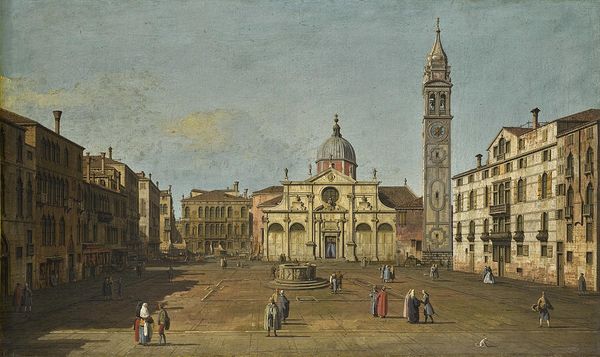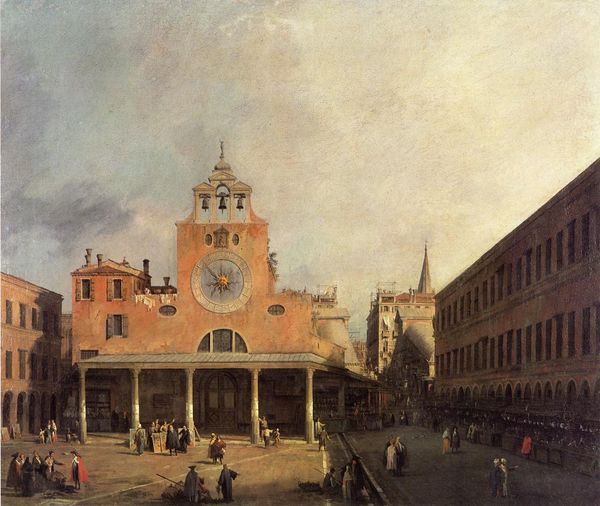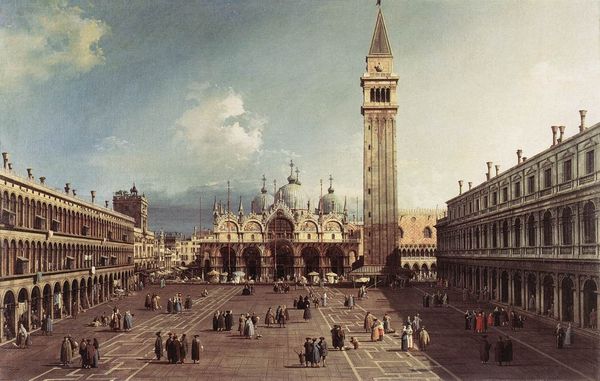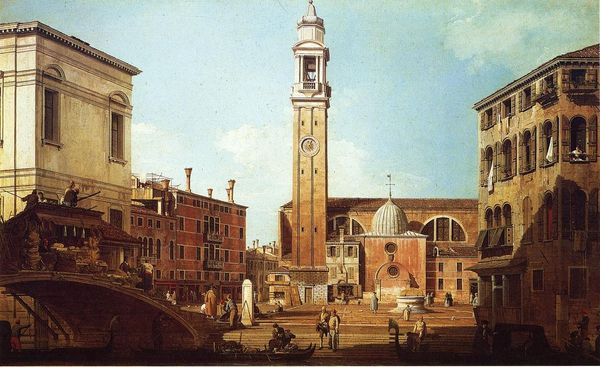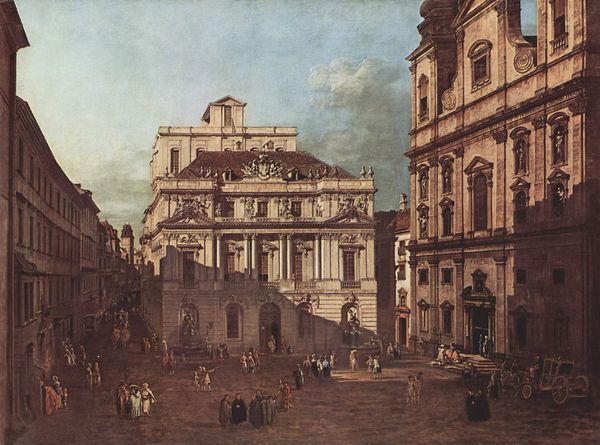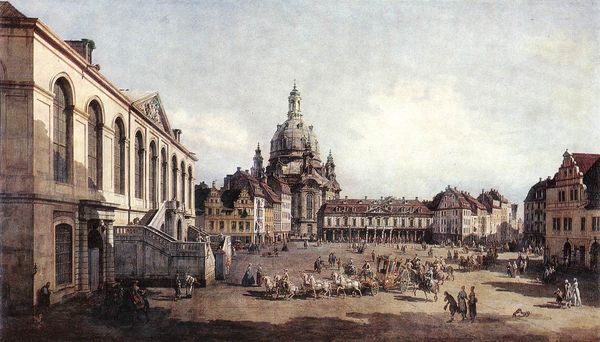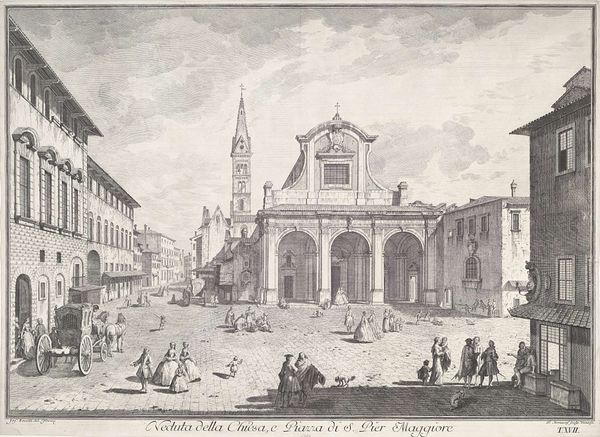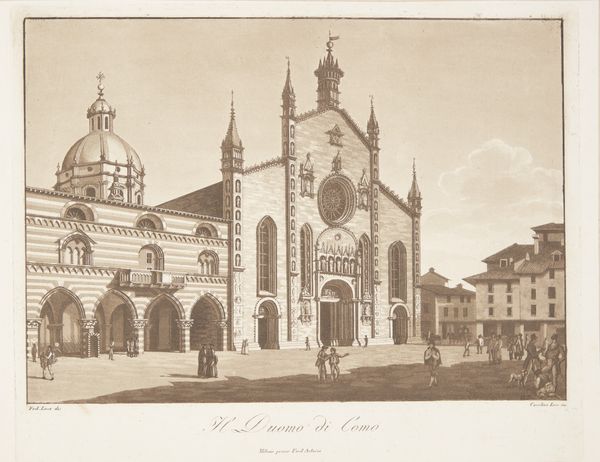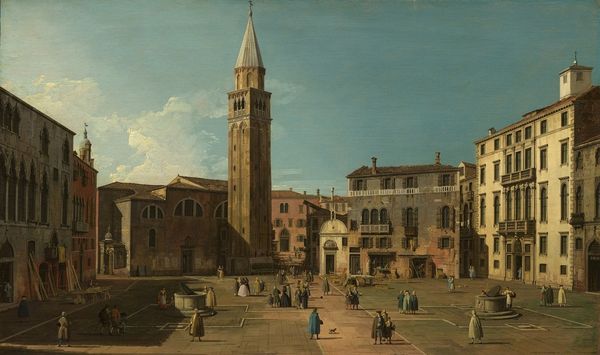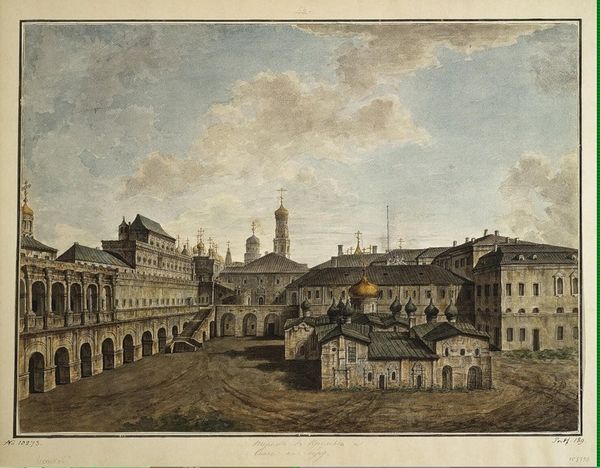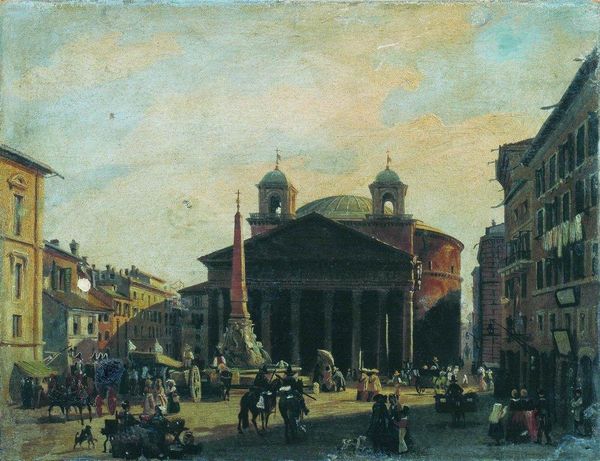
painting, oil-paint
#
public art
#
urban landscape
#
venetian-painting
#
baroque
#
painting
#
oil-paint
#
landscape
#
urban cityscape
#
15_18th-century
#
square
#
cityscape
#
genre-painting
#
building
Dimensions: 47 x 80 cm
Copyright: Public domain
Editor: So, this is Canaletto's "Campo Santa Maria Formosa," painted in 1735, using oil paint. What strikes me immediately is the precision of the architecture – every line, every window so meticulously rendered. It feels almost like a stage set. How do you approach a piece like this, focusing on its formal qualities? Curator: Precisely. The 'stage set' feeling arises from Canaletto’s rigorous application of perspective. Notice the orthogonals receding towards a vanishing point, dictating the spatial relationships. It's not just representation; it's a construction of space. Do you observe the light? Editor: Yes, the light is quite even, almost diffused. It doesn't seem to highlight any particular area or figure. Curator: Exactly. The uniform illumination serves to flatten the scene somewhat, emphasizing the overall compositional structure rather than dramatic contrasts. Consider the geometric relationships between the buildings. How do the vertical lines of the campanile, for example, interact with the horizontal lines of the facades? Editor: They create a clear grid-like structure, a kind of underlying order. It’s very balanced and harmonious. The figures almost seem secondary to this architectural arrangement. Curator: Indeed. Their function, formally speaking, is to reinforce the sense of scale and spatial depth, their dark forms punctuated in measured intervals, like musical notes on a staff. The texture of the canvas itself – that materiality – provides subtle variations on this theme. Do you discern the method he used to plan the drawing on the canvas? Editor: It almost appears as though he transferred it from a highly planned drawing. I would assume a drawing from a camera obscura. The precision suggests pre-planning over impromptu strokes. Curator: Very insightful, Canaletto certainly uses the optics to further impose order onto a picturesque scene. That order reinforces, through its structural rigidity, a calm scene which draws one to contemplate the scene in a more organized manner. Editor: I see how focusing on these formal aspects helps to understand how the artist structured the visual experience and communicated those themes of order through visual elements. It has really enriched my viewing experience. Curator: Mine too, noticing your acute observations have broadened my understanding about composition, thank you.
Comments
No comments
Be the first to comment and join the conversation on the ultimate creative platform.
